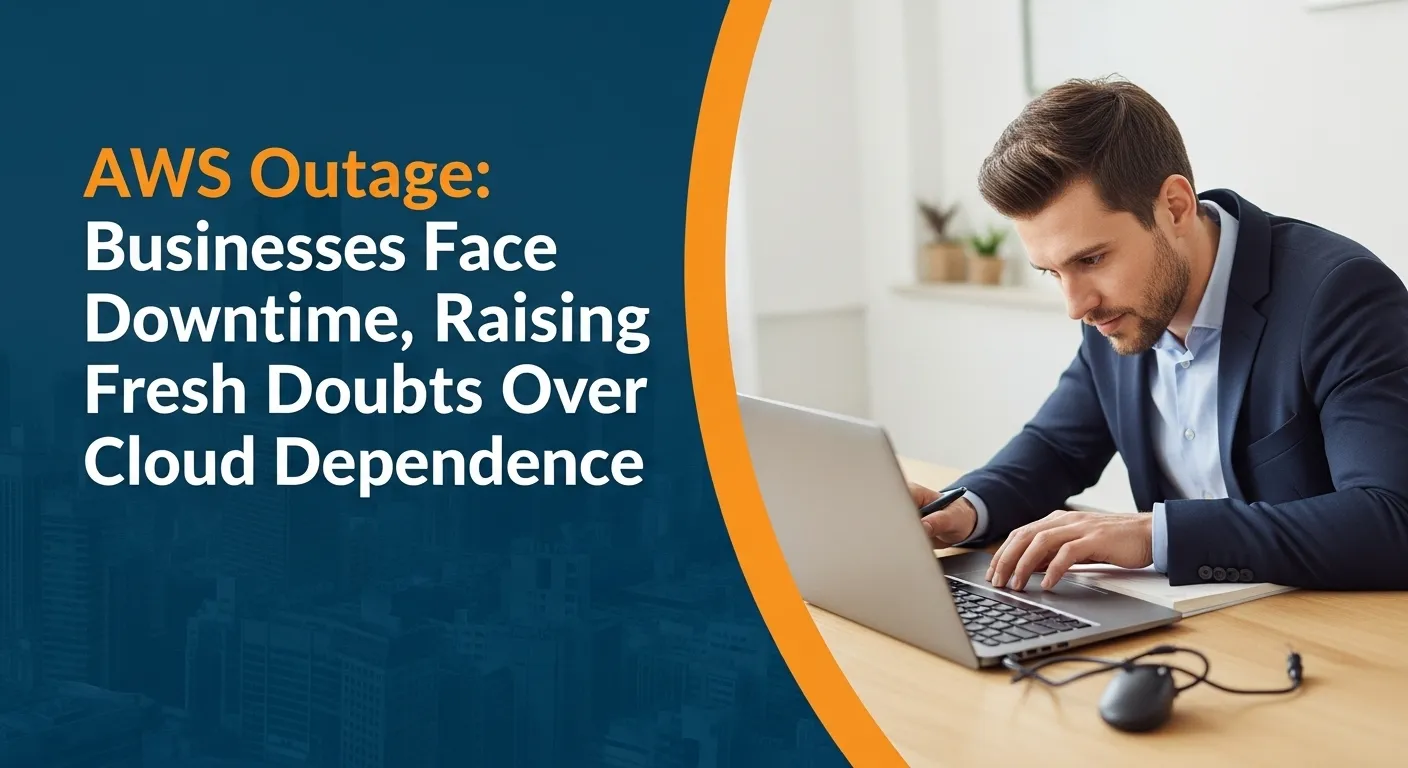The moment the AWS outage began, companies relying on Amazon Web Services found themselves scrambling. We saw entire systems stall, scores of applications go offline, and a digital ecosystem exposed. This event shines a harsh light on dependency on a single cloud provider and raises an urgent question: how safe is it to place so much trust in one platform?
What Happened During the AWS Outage?
At the core of this major disruption was a severe spike in error rates in the US-East-1 region of Amazon Web Services. Services like DynamoDB and core DNS functions were affected, triggering knock-on problems across apps and services. Incident reports show major brands, ranging from gaming apps to financial firms, faced wide-scale interruptions.
The outage underscores how deeply embedded Amazon Web Services is in the digital infrastructure used by enterprises, governments, and everyday users.
Impact on Businesses and Services
Consumer Apps and Platforms Suffer Major Disruption
Major apps, including messaging platforms, video services, and gaming networks were brought to a halt. For instance, services such as Snapchat, Fortnite, Roblox and others were reported to be down or lagging. The ripple effect was rapid: digital payments, social media sharing, and session management all took hits in many markets.
Enterprise and Government Systems Felt the Shock
Banks, telecoms and public sector services were not spared. In the UK, for example, major institutions folded under the load, with sites such as the HMRC portal impacted.
For businesses, the outage meant lost revenue, frustrated customers, and a glaring spotlight on the fragility of modern infrastructure.
What This Means in Monetary Terms
Outage risks are not theoretical. Analysts estimate that outages of this scale can cost organisations millions per hour in lost productivity, repair efforts, and reputation damage.
The clear takeaway: when a critical supplier like Amazon Web Services stutters, the chain reaction is felt across many sectors.
Why the Cloud Dependence Question Is Gaining Momentum
Single Point of Failure: The Risk of Uniform Infrastructure
This outage demonstrates that providers like Amazon Web Services carry enormous responsibility and exposure. If huge swathes of business infrastructure ride on one provider, the impact of failure widens.
Reddit posts from IT professionals reflect the same theme:
Simple configuration errors can cascade when the scale is large and the diversity is low.
Interconnected Systems Amplify the Damage
Even if a particular company does not host directly on Amazon Web Services, many rely on third-party services that do. This hidden exposure means the extent of the impact often exceeds initial expectations.
Infrastructure designed for independence may still harbour single points of failure through dependencies.
Cloud Provider Market Concentration Raises the Stakes
Amazon Web Services controls a huge share of the global cloud infrastructure market, meaning its outages are not isolated events but systemic risks.
As more organisations double down on cloud adoption, resilience and diversity become operational imperatives, not just nice-to-haves.
Lessons for Businesses and Tech Teams
Build Redundancy, Don’t Assume Uptime Will Always Hold
One of the clearest takeaways from the AWS outage is the value of crafting fail-safe mechanisms. Deployments should avoid single-region or single-provider lock-in. Utilize multiple regions or alternate cloud vendors to spread risk. Plan for degradation, not just ideal performance.
Understand Your Hidden Dependencies
Visibility into your supply chain especially digital and cloud dependencies is critical. Ask: “Do we rely indirectly on Amazon Web Services even if our direct provider is different?” Recent events show that even non-AWS clients can suffer when AWS struggles.
Invest in dependency mapping and risk audit practices.
Prepare for Incident Response and Transparent Communication
When even Amazon Web Services faces issues, it reminds us how important timely communication is. End-users expect transparency and clarity when service interruptions occur. Maintain clear incident protocols, workarounds, and backup channels.
Update stakeholders quickly, even if full resolution is pending.
Consider Multi-Cloud or Hybrid Cloud Strategies
Relying solely on one provider may reduce complexity and cost, but increases risk. Many organisations are now exploring architectures that span two or more cloud platforms—or combine cloud and on-premises—to ensure operational continuity during provider outages.
While this adds complexity, the resiliency benefits can outweigh the overhead in high-availability environments.
Regulatory and Market Implications
Cloud Outages as a Systemic Risk
This event elevates cloud outages from “just technical troubles” to a broader risk factor for national infrastructure, supply chains, and critical services. Regulators may increasingly scrutinise the market dominance of cloud providers like Amazon Web Services and their role in systemic resilience.
Businesses may also need to disclose their cloud risk exposure to stakeholders and regulators.
Investor Perspective: Cloud Risk in Corporate Valuation
For companies whose operations depend on Amazon Web Services, an outage translates to immediate earnings risk, reputational damage, and service delays. This could feed into investor sentiment, valuations, and insurance premiums. Analysts may start factoring this into risk models more actively.
An event like this might shift capital flows away from companies with heavy single-provider dependency.
Conclusion
The recent AWS outage lays bare a simple truth: heavy dependence on Amazon Web Services carries risk. When one link in the digital chain falters, the ripple effect can be vast, affecting consumer apps, enterprise systems, and government services alike.
We urge companies across regions be it the United States, the United Kingdom, or Australia, to review their cloud dependence, reinforce resilience, and broaden their architecture beyond a single provider. In an age of digital services, continuity is the new frontie,r and the lesson from this event is clear: we must prepare for the moment the cloud provider loses altitude.
Frequently Asked Questions about AWS Outage
What is an AWS outage?
An AWS outage occurs when the cloud services provided by Amazon Web Services fail to operate properly. This leads to downtime for customers relying on that infrastructure.
Which services are most affected when AWS goes down?
Critical infrastructure like cloud databases, computing instances, and domain-name services can fail. These serve as foundations for apps, websites and business tools.
Can companies avoid being affected by an AWS outage?
Yes. Businesses can adopt strategies such as multi-region deployments, multi-cloud usage, local fail-over, and dependency mapping to reduce risk exposure.
Does an AWS outage reflect weakness in Amazon Web Services?
No single event defines overall strength, but the severity of the outage highlights the need for stronger resilience and diversified architecture rather than questions about performance alone.
How should a company respond if AWS outage impacts its services?
Restore critical functions via backup services, communicate clearly with users, evaluate dependency chains and implement lessons learned to strengthen future resilience.








.svg)
.svg)